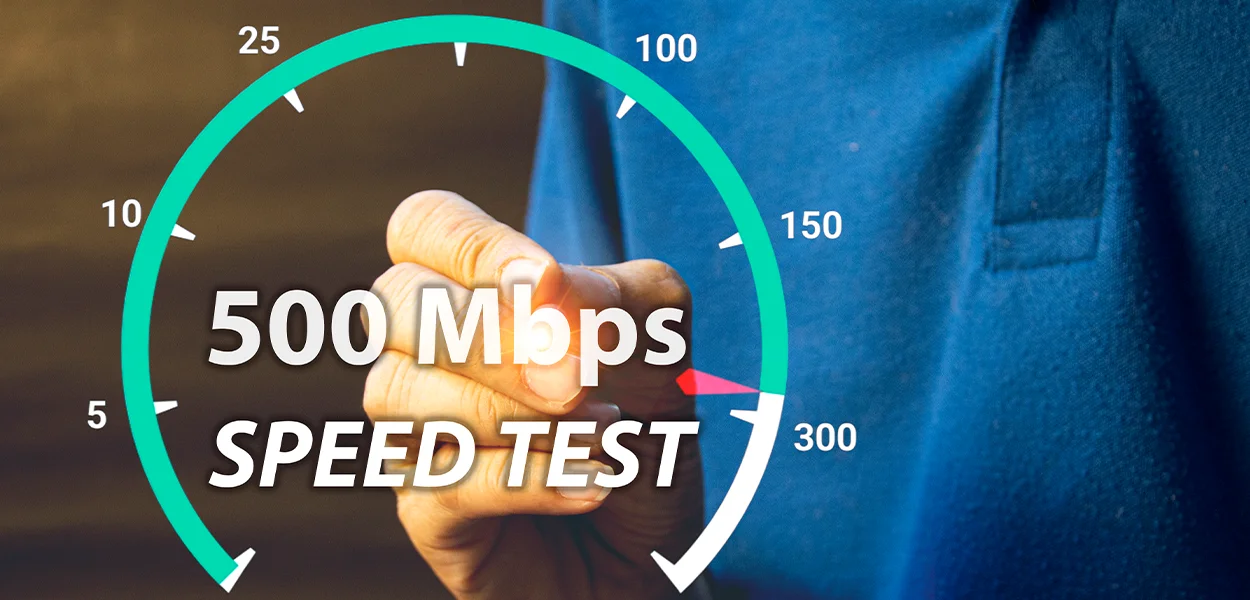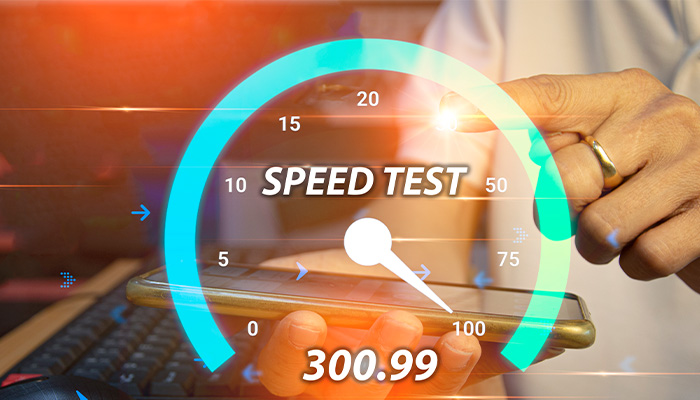How to Optimize Your Android App for Performance and Speed
How to Optimize Your Android App for Performance and Speed
Oct 26, 2023 17:55 PM
How to Optimize Your Android App for Performance and Speed
Oct 26, 2023 17:55 PM

Android devices are equipped with many cores. So, writing smooth applications is easy for anyone. Wrong. Choosing the best Android option can be difficult because everything can be done differently. You must understand what is happening underneath the hood to select the most efficient option. Many tools will help you identify bottlenecks without relying on your sense of smell or feelings. Apps that are well-optimized and run smoothly improve the user experience and drain less battery.
Let's look at some numbers to see how important optimization is.
86% of users, including myself, have uninstalled an app after only using it once because of poor performance. You have 11 seconds or less to display content to a user when loading it. You will only get more time from every third user. It could also result in a lot more negative reviews on Google Play.
In the top 100 apps, 40 launch in less than 2 seconds and 70 in less than 3 seconds. If possible, display content as quickly as possible. Delay background checks and update a little.
Remember that premature optimization is the source of all evil. Micro optimization is also a waste of time. Optimizing code that is frequently executed will yield the greatest benefit. This includes, for example, the on Draw() functions, which run every frame and ideally 60 times a second. Try to only redraw what is necessary. Drawing is one of the most time-consuming operations. Later, we will talk more about this.
This comprehensive guide will explore the various aspects of Android app optimization, from identifying performance bottlenecks to implementing best practices that can significantly boost your app's speed and efficiency.
Before diving into the nitty-gritty of optimization techniques, it's important to understand why optimizing your Android app is so crucial. Here are a few key reasons:
In a world where users have countless options at their fingertips, they won't hesitate to uninstall an app that's slow, unresponsive, or resource-intensive. A well-optimized app keeps users happy and engaged.
Optimized apps tend to have higher user retention rates. Users are more likely to return to an app that offers a smooth and responsive experience, leading to increased engagement and longer usage sessions.
Unoptimized apps often suffer from high churn rates as users quickly lose interest due to performance issues. Optimization can help reduce churn and lead to more loyal users.
App stores take app performance into account when ranking search results. A well-optimized app is more likely to be discovered by potential users.
Performance-related issues are a common source of negative reviews. By optimizing your app, you can reduce the number of complaints and improve your app's overall rating.
Before you can start optimizing your Android app, you need to identify the areas that need improvement. Here are some common performance bottlenecks to watch out for:
If your app's UI is slow to respond to user interactions, it can be frustrating. Slow animations, unresponsive buttons, and laggy scrolling are all signs of UI performance issues.
Apps that consume too much CPU and memory can slow down the user's device, leading to a poor experience. Check for inefficient algorithms, memory leaks, and resource-intensive operations.
Slow network requests can lead to delays in loading data and content. High latency can be a result of poor network management, excessive data fetching, or inadequate caching.
Apps that drain the device's battery quickly are often uninstalled. Excessive background processes, non-optimized code, and frequent wake locks can contribute to this issue.
A bloated app with a large APK (Android Package) size can deter potential users, especially those with limited storage space on their devices.
Rendering problems, like jank and flickering, can make the app appear unpolished. This can be due to slow drawing, poor frame rates, or rendering overloads.

Now that you're aware of the common performance bottlenecks, let's explore some optimization techniques to address these issues:
Use RecyclerView: For displaying lists, RecyclerView is a more efficient choice than ListView. It offers better performance and flexibility.
Lazy Loading: Load images and content as the user scrolls, rather than preloading everything at once. This reduces initial load times.
Reduce Overdraw: Minimize overdraw by optimizing your app's layout and using tools like Android Studio's Layout Inspector.
Use Constraint Layout: ConstraintLayout offers better performance than traditional layouts and is more flexible for creating complex UIs.
Avoid Memory Leaks: Use the Android Profiler to identify memory leaks in your app. Leaks can occur with objects that are not properly released when they are no longer needed.
Use the Right Data Structures: Choose the appropriate data structures and collections to minimize memory usage and optimize data access.
Bitmap Handling: When working with bitmaps, consider using the BitmapFactory. Options class to reduce memory consumption. Use the Glide or Picasso libraries for efficient image loading and caching.
Minimize Network Requests: Reduce the number of network requests by batching them and fetching only the necessary data.
Use Caching: Implement both in-memory and disk caching to reduce the need for repeated network requests. Consider using libraries like OkHttp for efficient caching.
Optimize Image Loading: Compress and resize images appropriately before sending them over the network. Use image formats like WebP for better compression.
Minimize Background Services: Limit background services to essential tasks. Use JobScheduler or WorkManager for efficient background processing.
Wakelocks: Avoid using wakelocks unnecessarily. Release wakelocks when they are no longer needed to conserve battery life.
Battery Profiling: Use Android Profiler to monitor battery usage and identify power-hungry components or functions in your app.
Proguard and R8: Use code-shrinking tools like Proguard and R8 to remove unused code and resources, reducing the APK size.
Dynamic Delivery: Implement dynamic delivery to serve users with only the resources and features they need, reducing the initial download size
.GPU Rendering: Use hardware acceleration for rendering, and reduce rendering overhead by optimizing your UI layout.
Frame Pacing: Maintain consistent frame rates to ensure smooth animations and transitions.
RenderScript: Utilize RenderScript for computationally intensive tasks to offload work to the GPU.
After applying these optimization techniques, it's crucial to thoroughly test and profile your Android app to ensure that the performance improvements are effective. Here are some key testing and profiling methods:
Testing on real devices is essential to identify any device-specific issues and to ensure that your app performs well across various Android versions and hardware configurations.
Emulator testing allows you to simulate different device configurations. It's particularly useful for testing on older Android versions and specific screen sizes.
Use Android Profiler to profile your app's CPU, memory, and network usage. This tool helps identify performance bottlenecks and memory leaks.
Gather feedback from real users, either through beta testing or by monitoring user reviews. This feedback can help identify specific performance issues that users encounter.
Implement automated UI tests and performance tests using tools like Espresso, UI Automator, or Firebase Test Lab to ensure that your app functions correctly and efficiently.
Optimizing your Android app for performance and speed is an ongoing process. Here are some best practices to maintain optimal performance:
Stay current with the latest versions of libraries, SDKs, and dependencies to benefit from performance improvements and security updates.
Use crash reporting tools to monitor app crashes and address them promptly. Crashes can significantly impact the user experience.
Continually optimize your app's resources, such as images, layouts, and databases. Ensure that you use the most efficient formats and techniques.
Periodically review and refactor your code to remove inefficiencies, redundancies, and bottlenecks. Clean code is easier to maintain and optimize.
Experiment with different performance optimizations through A/B testing to determine which approaches work best for your app and your audience.
Optimizing your Android app for performance and speed is not just a one-time task but an ongoing commitment to delivering a top-notch user experience. Users expect fast, responsive, and efficient apps, and by following the best practices and techniques outlined in this guide, you can meet and exceed those expectations.
Remember that user satisfaction, retention, and app store visibility are directly influenced by your app's performance. So, invest the time and effort to optimize your Android app, and you'll reap the benefits of increased user engagement and app success in the highly competitive world of mobile applications.
You can now see all the points to improve your app's performance. Here's the truth: Optimizing Android applications is more difficult than it seems. You can use these ten techniques in many different ways, so it's important to know their pros and cons.
Our expert developers optimize the performance of your Android app by following best practices in the industry. This allows you to set the benchmark for the market.
App optimization is the process of enhancing an Android app's performance, responsiveness, and speed. It is important because it directly impacts user satisfaction, retention, and app store visibility. Optimized apps provide a better user experience, leading to higher ratings and user engagement.
Common performance bottlenecks include slow UI response, excessive CPU and memory usage, network latency, battery drain, large APK size, and rendering issues. Identifying and addressing these bottlenecks is crucial for improving app performance.
To optimize UI performance, consider using RecyclerView, lazy loading of content, minimizing overdraw, and utilizing ConstraintLayout for complex layouts. These techniques can improve app responsiveness and smoothness.
Optimizing memory management involves avoiding memory leaks, using the right data structures to minimize memory usage, and handling bitmaps efficiently. Proper use of libraries like Glide or Picasso for image loading and caching can also help.
To optimize network performance, you should minimize network requests, implement effective caching, and reduce image sizes before sending them over the network. These practices can significantly reduce latency and enhance app speed.
Ongoing app optimization best practices include regularly updating libraries and dependencies, monitoring crash reports, optimizing resources, refactoring code to remove inefficiencies, and conducting A/B testing for performance improvements. These practices ensure your app remains fast and efficient as it evolves.
Strategy
Design
Blockchain Solution
Development
Launching
Testing
Maintenance
Contact US!

Plot 378-379, Udyog Vihar Phase 4 Rd, near nokia building, Electronic City, Phase IV, Sector 19, Gurugram, Haryana 122015
Copyright © 2025 PerfectionGeeks Technologies | All Rights Reserved | Policy
Strategy
Design
Blockchain Solution
Development
Contact US!

Plot 378-379, Udyog Vihar Phase 4 Rd, near nokia building, Electronic City, Phase IV, Sector 19, Gurugram, Haryana 122015

1968 S. Coast Hwy, Laguna Beach, CA 92651, United States
Copyright © 2025 PerfectionGeeks Technologies | All Rights Reserved | Policy